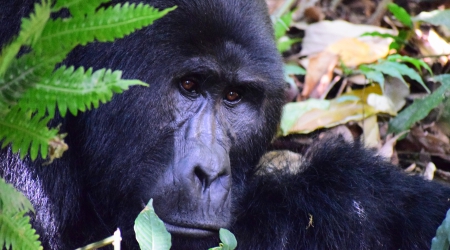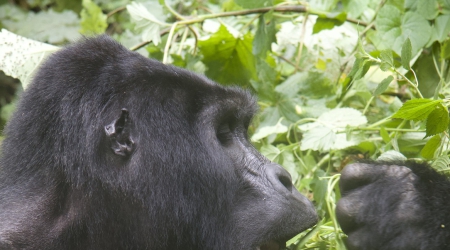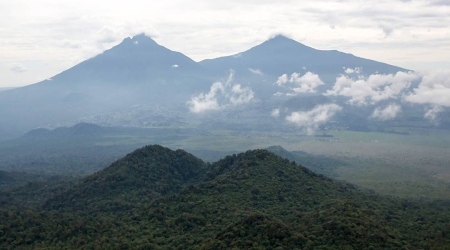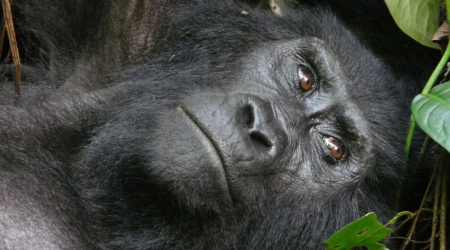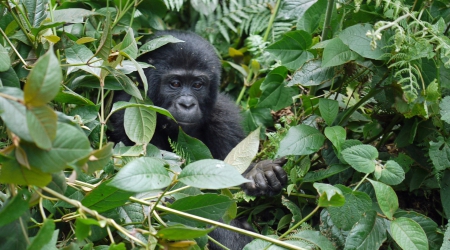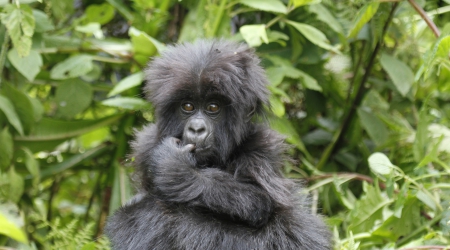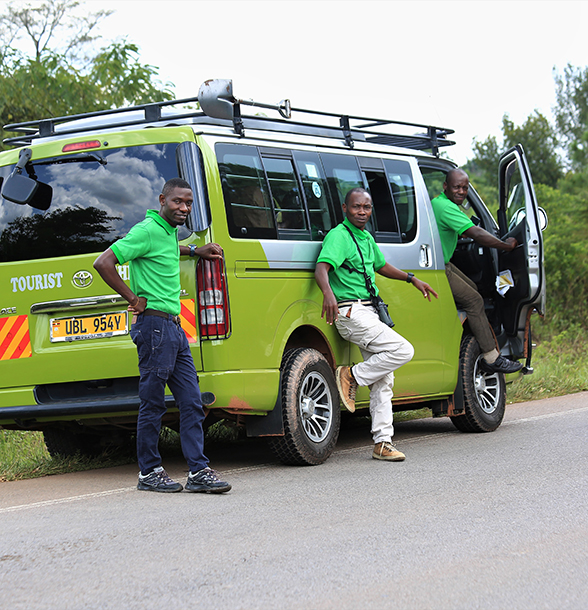Gorilla trekking for the disabled – Uganda, Rwanda: Gorilla trekking adventure is open to all nature lovers worldwide. Visiting the massive and endangered mountain gorillas in the wild is an experience of a lifetime. Gorillas are amazing creatures to interact and you can get the best of a close encounter with them while in the dense forests in Africa.
Four sub-species of gorillas live in Africa, but the most sought-for sub-species are the mountain gorillas. Mountain gorillas are unique and endemic to only 4 parks in Africa; Bwindi Impenetrable National Park and the Virunga highlands- Mgahinga Gorilla National Park-Uganda, Volcanoes National Park (Rwanda) and Virunga National Park (Congo). Other sub-species of gorillas to find in Africa include the Eastern lowland gorillas, Western lowland and Cross-River gorillas.
Unlike western lowland gorillas, mountain gorilla population is still low with only fewer than 1063 of them dwelling in the African jungles. Mountain gorillas fall under the UNESCO list of endangered species and considering their status, more efforts are needed to ensure their survival for generations. Visiting to see these apes in the wild is one way you can play part in their conservation and protection. To visit mountain gorillas, you require a valid gorilla permit and each costs USD1500 for guests visiting Rwanda, in Congo USD400 and USD700 for travelers on a gorilla tour in Uganda.
Gorilla trekking for the disabled in Uganda and Rwanda
A special care is given to persons with disabilities or even the elderly who travel for gorilla trekking. First, trekking mountain gorillas requires some level of physical wellness because it is a long day walk often takes from 2-6 hours.
Before the actual visit to see gorilla begins, a briefing is carried out by the park official/tourism warden at the park offices. You get insight into the gorilla trekking rules to follow and later, the park guides and gorilla families are assigned to visitors. Guests who are unfit including persons with disability can request a gorilla family that is easier to track or the one that is close to the park offices. To reach a gorilla family, persons with disabilities are lifted by energetic porters using a stretcher or sedan chair.
Cost of sedan chairs / stretchers
Carriers such as sedan chairs and stretchers used for lifting persons with disabilities during gorilla trekking cost between USD350 and USD500. Before you take a trip to any of the gorilla safari parks, we advise that you let your tour operator aware of your condition.
How gorilla trekking for the disabled is planned
Upon confirming a safari and stating that you are a person with a disability or elderly, the ground tour operator will commence the process to ensure you have a memorable trip. This includes booking gorilla permits, comfortable vehicles for your travel, special sedan chairs/stretchers and porters, and accommodation that is friendly to your condition.
On an actual visit to see gorillas, the porters also carry your cameras and packed food, drinks, bags, and other essential items. The porters are available for hire at all gorilla trekking parks and considering their background, hiring them is one way to support locals and their families. Some of them were once poachers but changed to support wildlife conservation.
Gorilla trekking destinations for the disabled
Not every part of Africa has gorillas, and the best destinations to consider a must-visit include Uganda, Rwanda, and D.R. Congo. The most preferred gorilla trekking destinations persons with disabilities can explore on a gorilla trekking tour are; Bwindi Impenetrable National Park & Mgahinga National Park located in Southwestern Uganda, Virunga National Park in the D.R. Congo & Volcanoes National Park in Rwanda.
What should you pack?
Carry only essentials including sunglasses, rain jacket, gorilla permit, insect repellent, bottled water, snacks, a good camera with no flash, daypack waterproof, long trousers, toiletries, first aid kit, long-sleeved shirt, sweater, and more.
When to visit?
the best time to travel for gorilla trekking is during the dry season when conditions are more favorable because there is little/no rain. The ground is kept drier making it easier to walk through while searching for a gorilla family. The drier months of the year to plan your gorilla tour are June, July, August, September, and December, January, & February.




